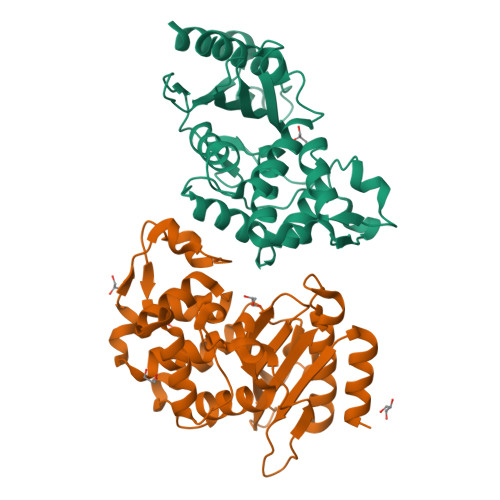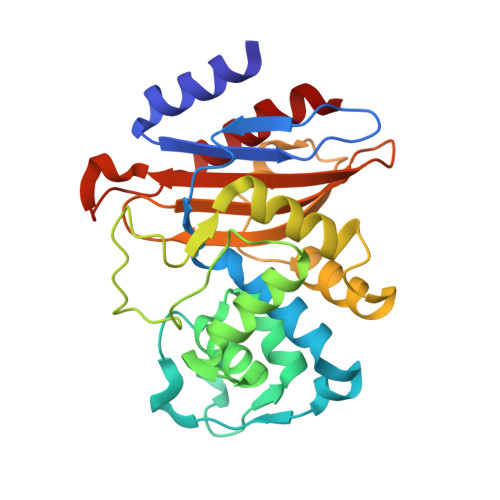Enhanced activity against a third-generation cephalosporin by destabilization of the active site of a class A beta-lactamase.
Sun, J., Chikunova, A., Boyle, A.L., Voskamp, P., Timmer, M., Ubbink, M.(2023) Int J Biol Macromol 250: 126160-126160
- PubMed: 37549761
- DOI: https://doi.org/10.1016/j.ijbiomac.2023.126160
- Primary Citation of Related Structures:
8OE1, 8OE5 - PubMed Abstract:
The β-lactamase BlaC conveys resistance to a broad spectrum of β-lactam antibiotics to its host Mycobacterium tuberculosis but poorly hydrolyzes third-generation cephalosporins, such as ceftazidime. Variants of other β-lactamases have been reported to gain activity against ceftazidime at the cost of the native activity. To understand this trade-off, laboratory evolution was performed, screening for enhanced ceftazidime activity. The variant BlaC Pro167Ser shows faster breakdown of ceftazidime, poor hydrolysis of ampicillin and only moderately reduced activity against nitrocefin. NMR spectroscopy, crystallography and kinetic assays demonstrate that the resting state of BlaC P167S exists in an open and a closed state. The open state is more active in the hydrolysis of ceftazidime. In this state the catalytic residue Glu166, generally believed to be involved in the activation of the water molecule required for deacylation, is rotated away from the active site, suggesting it plays no role in the hydrolysis of ceftazidime. In the closed state, deacylation of the BlaC-ceftazidime adduct is slow, while hydrolysis of nitrocefin, which requires the presence of Glu166 in the active site, is barely affected, providing a structural explanation for the trade-off in activities.
Organizational Affiliation:
Macromolecular Biochemistry, Leiden Institute of Chemistry, Leiden University, Einsteinweg 55, 2333 CC Leiden, the Netherlands.




















